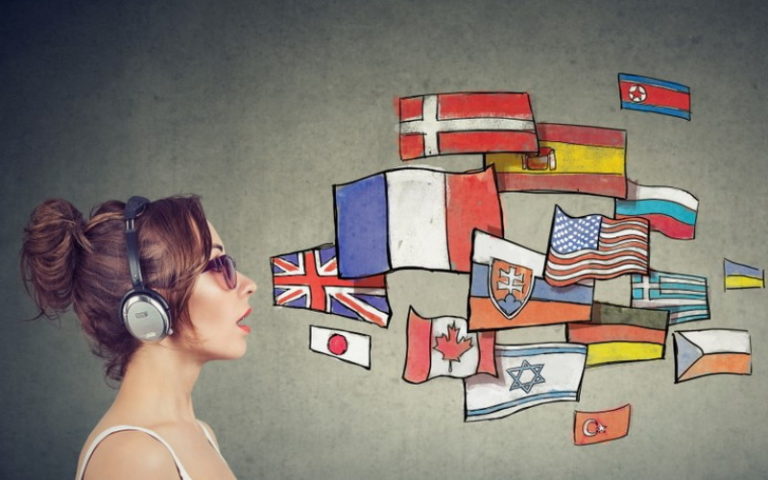Table of Contents
Do you want to become fluent in one of these easiest languages to learn for English speakers? Are you confused about which new language you should learn? What will be a better language to learn on your next vacation; a widely spoken one such as Spanish or Mandarin, or a politically relevant one such as Russian?
There are many valid motives, but here’s one more: you’re busy. This is true for all of us. How about taking on a relatively easy language to learn? Whether you’re looking for new experiences and opportunities in your career, studying and working abroad or connecting with new people and cultures, learning a new language will open up a world of possibilities for you.
How can you choose which language to master if there is such a wide selection? Some languages are indeed easier for fluent English speakers to become proficient in than others, even though every foreign language has its own set of unique challenges.
List of 15 Easiest Languages to Learn
We have listed 15 languages that are easier to learn. Many factors influence how quickly you learn a language. What languages do you have the best chances of mastering efficiently?
1. Norwegian

Many English speakers might be surprised to discover that easiest language of the world is Norwegian. As with English, Norwegian belongs to the Germanic family of languages. We’ll let you figure out the translations for Sommer (summer) and Vinter (winter) and (we’ll let you figure it out).
Norwegian has another selling point: the grammar is relatively straightforward, with only one form per tense of every verb. Since the two languages adhere to the same word order, mastering sentence structure is a breeze! Additionally, you can pronounce Norwegian in a more natural way.
As a result, Norwegian has a variety of accents, which means there is more than one “correct” way to pronounce words. So, in the list of easiest languages to learn, Norwegian is on top.
2. Spanish

It’s no surprise to see this pick. Spanish has been a top choice for English learners due to its practicality and global reach. Well, for English speakers, it also makes learning a lot easier. Since it is a Romance language, which derives from Latin – like many English words – finding cognates is extremely important. Correcto, Delicioso, and Pizza, Pizza are the words for “correct”, “delicious” and “pizza” respectively.
Furthermore, Spanish pronunciation can also be fairly straightforward. Few words can’t be pronounce the same way they’re spell. Grammar haters may find Spanish verb tenses confusing since there are many different verb tenses. Even so, the tenses are mostly the same ones we use in English, so learning them isn’t as hard as it may seem.
Choosing to learn Spanish may be the best choice for your everyday life because of its prominence. Over 450 million Spanish-speaking people speak the language around the world, according to recent estimates. Countless people in your community speak Spanish on TV, the radio, and even on the street.
Read Also: How Long Does It Take to Learn Spanish
3. Dutch

The Germanic language Dutch is also on our list. The Dutch language is third in popularity among Germanic languages behind English and German. This is due to the similar linguistic structure of Dutch and German.
However, certain words sound different than others. In Dutch, the word “rat” is almost identical to the English word “rot.” Watch out for misconstrued cognates, like “wet,” which means “law” in Dutch. If you’re vigilant, Dutch might be for you. Three Germanic languages dominate this listing, but English’s cousins, Danish and German, do not cut.
Although German shares thousands of cognates with English, no one could describe its grammar as “easy.” The pronunciation of Danish can be a bit intimidating to beginners, even though it looks like Norwegian and Swedish.
4. Portuguese

Globally, there are roughly 235 million Portuguese speakers. Being familiar with Portuguese can be extremely helpful since it’s the official language of Brazil, Portugal, as well as six countries in Africa: Angola, Cape Verde, and Mozambique. Portuguese is a language based on Latin that uses the English alphabet, so speakers of English have an advantage when learning it.
That’s why include in easiest languages to learn. It is important to keep in mind that Brazilian Portuguese is quite different from European Portuguese.
There are several types of Portuguese, which vary in everything from pronunciation to vocabulary. How and where you should use it depends, of course, on which one you should prioritize.
5. Indonesian

Indonesian is a logical choice for English speakers because of its many advantages. With a population of almost 24 million people, Indonesian is the most widely spoken language in Asia that uses the Latin alphabet.
Because of their strange characters in their writing systems, many Asian languages are tough for English speakers to master, but not Indonesian.
The words of this language are also phonetic, meaning words are pronounced the same way as they are spelled. Although English and Indonesian grammar structures differ greatly, don’t let that put you off! Since there are no rules, learning grammar is much simpler.
The verbs do not have conjugations (yes, you read that correctly!), there are no plurals (just repeat the word twice), or any grammatical gender. A language like Indonesian might be easiest languages to learn and perfect fit for you if you don’t like grammar rules!
6. Italian

Despite your limited knowledge of Italian, you probably have heard many Italian words, such as “gelato,” “Panini,” and “finale”. The sentence structure and pronunciation of Italian and English are similar in most cases. If you know a few ground rules, most words will be easy for you to read and pronounce.
Nearly 65 million Italians speak the language as their primary language. In spite of its marginal popularity, Italian is spoken outside of Italy in many places, including Switzerland, Croatia, Slovenia, and even Argentina.
Read Also: How Long Does It Take to Learn Italian
7. French

This is another of the most widely spoken Romance languages. In several countries and cultures (including, for example, France, Canada, Belgium, Rwanda, and Madagascar) there are more than 300 million people who speak French (or one of its dialects or creoles).
The French language has an extensive shared vocabulary with the other Romance languages, making it a great linguistic choice. However, its linguistic roots are not its only advantage. Throughout French and English history, key parts of their languages have spread from one country to another.
In easiest languages to learn, French mainly manifested in the addition of French vocabulary to the English language (e.g. avant-garde and à la carte), although the French vocabulary also shared English words (e.g. weekend). It may seem hard to pronounce French at first, but we hear French accents often in pop culture, so they’re easier to emulate than you think.
Read Also: How Long to Learn French Language
8. Swedish

Around 10 million people speak Swedish, most of them in their native country, but one small minority lives in Finland, where Swedish is also a national language. The easy thing about learning Swedish is that it is a Germanic language, so English speakers have an easier time learning it.
The grammar rules and sentence structure in Swedish are not particularly difficult, despite the pronunciation taking some time to master. It will take some time to get use to the three extra vowels in this Scandinavian language.
9. Romanian

There may be a surprise for you in seeing Romanian on this list. Although Romania is surrounded by places that speak Slavic, the language is Romance and shares a lot of vocabulary with Italian, Spanish, and French.
Several aspects of Romanian, such as its grammar and letters with diacriticals, can be tricky, but overall, this language is fairly and one from easiest languages to learn, as it is spoken by 30 million people in Romania and Moldova, mostly.
10. Danish

English speakers will also be familiar with a lot of its vocabulary, which is similar to Norwegian and Swedish. Likewise, the Danish word “Gode Tidende” means “Good news,” and the English word “dear” means something that is considered to be too expensive.
Learning the Danish language, however, is simply the most effective way to fully appreciate Danish culture and form meaningful connections if you intend to live in Denmark for a prolonged period of time.
11. German
Even though it is called German, it is an Indo-European language. In addition to a similar alphabet, sentence structure, and vocabulary, the language has many similarities to English. The German language has many everyday words that are similar to English, for example, “Wasser” (water), “Apfel” (apple) and “Fisch” (fish). Many English-speakers have trouble with the pronunciation of German.
For example, the word “Fremdschämen” (cringe) or “Verschlimmbessern” (to worsen or increase) are particularly problematic. Someone might be thinking that German in not from easiest languages to learn.
However, German is not as difficult for English-speakers as Dutch or Norwegian. In Central Europe, including Austria, Switzerland and Luxembourg, it is spoken by more than 100 million people, making it one of the most useful languages to learn.
12. Malay
In Southeast Asia, more than 200 million people speak Malay. This Austronesian language is similar to Indonesian.
The language shares many similarities with Indonesian since both Indonesia, Brunei, and Singapore use a similar variation of the language.
Malay and Indonesian speakers can generally understand each other, but they differ in grammar, vocabulary, and spelling; Malay borrows from English more often, while Indonesian borrows more from Dutch.
Because of the simple grammatical rules and easy pronunciation, Malaysian is consider one of the easiest Asian languages to learn.
It is an excellent choice for those who plan to spend any significant period in Southeast Asia as a second language, even though it requires a lot of vocabulary learning.
13. Swahili
The Swahili language is relatively one from the list of easiest languages to learn which is easy to pronounce, and many of its words are similar to their English equivalents.
A great place to begin learning one or more African languages is Swahili. Among other things, “Polisi” means “police” and “Baiskeli” means “bicycle.” Swahili also has some important differences, so you should get familiar with the language.
14. Filipino Tagalog
Besides being an official language of the Philippines, Filipino Tagalog is also an Austronesian language. There is not a lot of complexity in learning this language, as the pronunciation is straightforward.
There is a great deal of vocabulary borrow from other languages, like English, Spanish, and Malay. Tagalog, however, has a sentence structure and verb focus distinct from English, making it the tough language on our list but we have added it in easiest languages to learn.
The key is to simply get some practice in, as is the case with many foreign languages. When planning to remain in the Philippines, learn some Tagalog, at least the basics. Around 45 million people speak Tagalog as a native language.
15. Frisian
As a primary language, Frisian once dominated what was known as Frisia during the middle ages. There is still some use of Frisian in parts of the Netherlands and Germany, even though Frisia no longer exists.
Frisian consists of three main dialects. But, why Frisian is in easiest languages to learn? Because, Frisian and English share many vocabularies and sentence structure similarities.
If you don’t plan on moving to either the Dutch province of Friesland or Germany’s Saterland or North Frisian region, there is little reason to learn Frisian. Only 500,000 people speak and understand the language. Find out which languages can be from hardest languages to learn if you want to take a challenge.

Ihsan Sharif is a talented writer known for his engaging articles on linguistic topics. With a keen eye for detail and a passion for language, Ihsan brings complex linguistic concepts to life, making them accessible and interesting to a wide audience.




